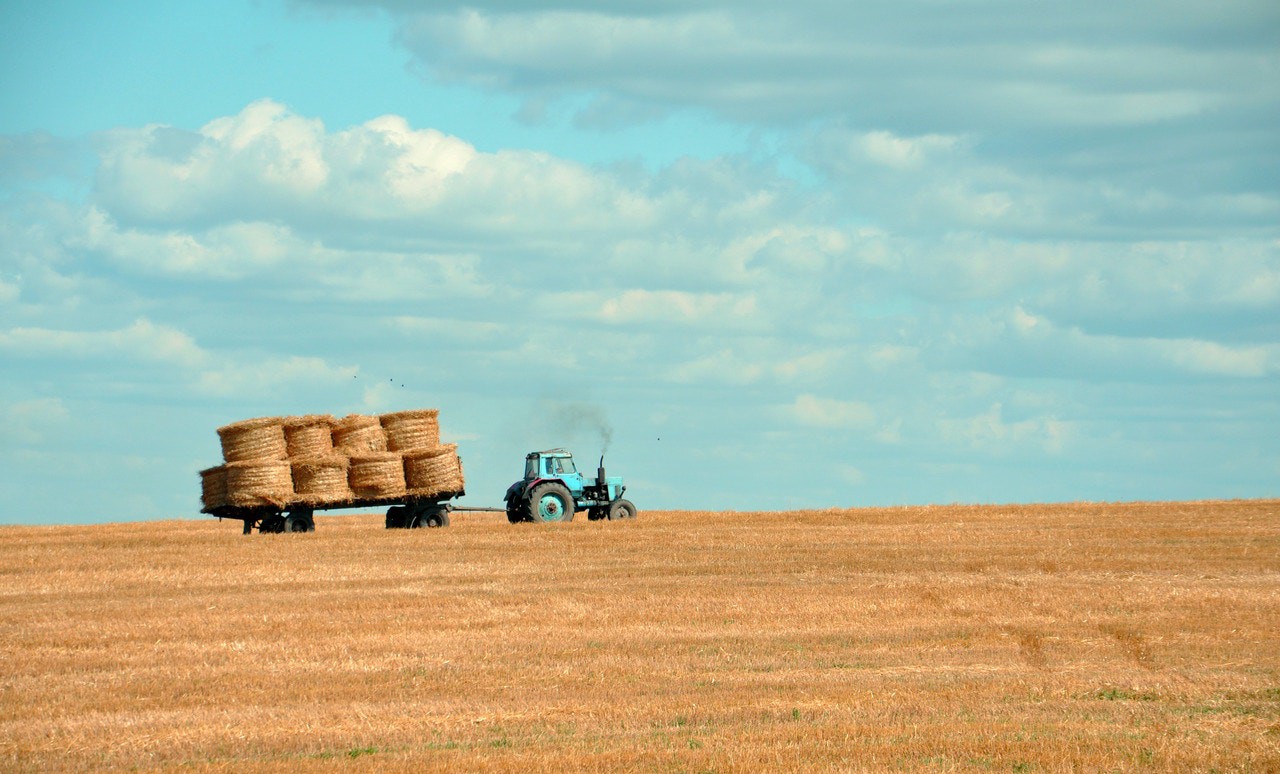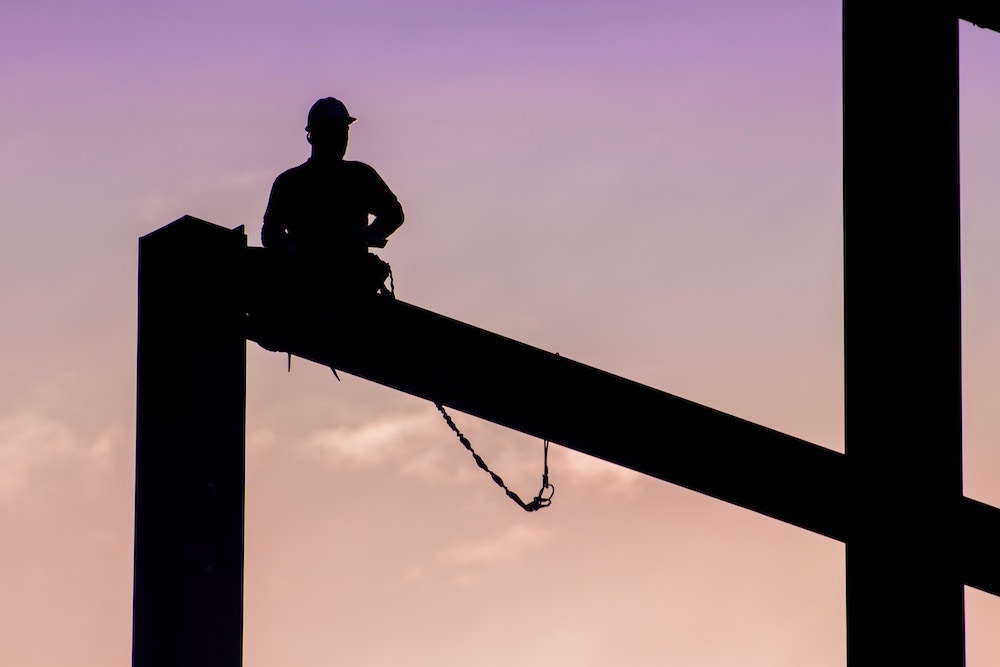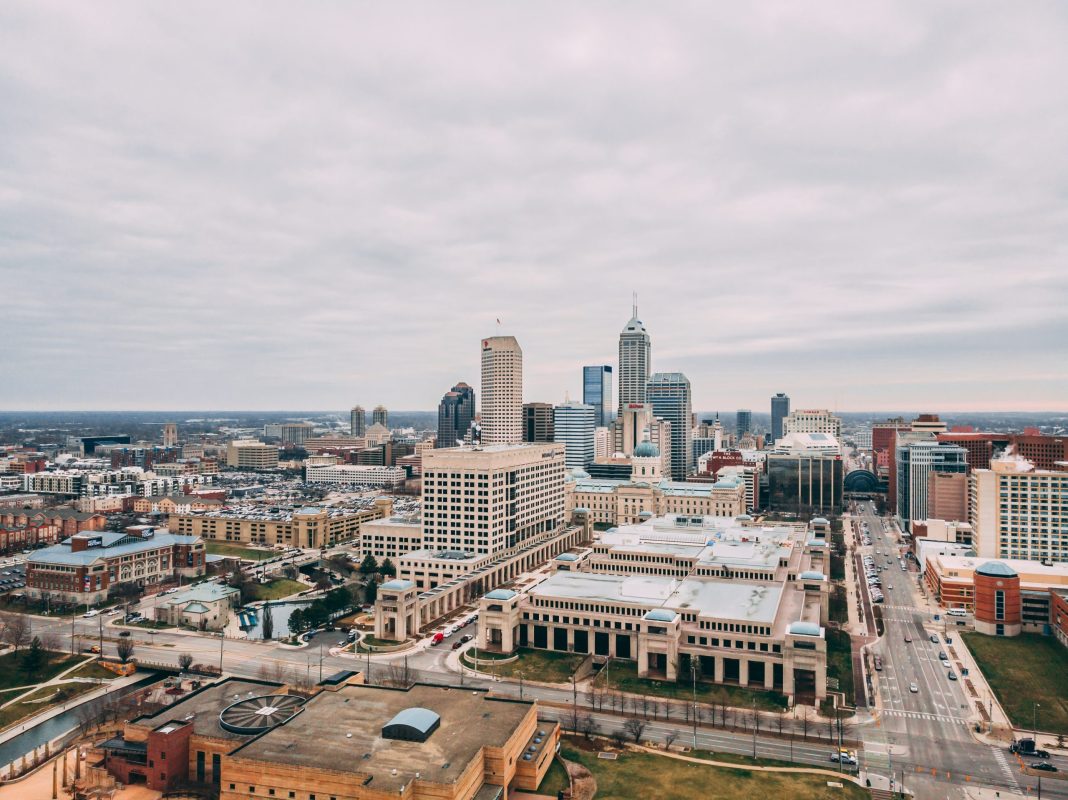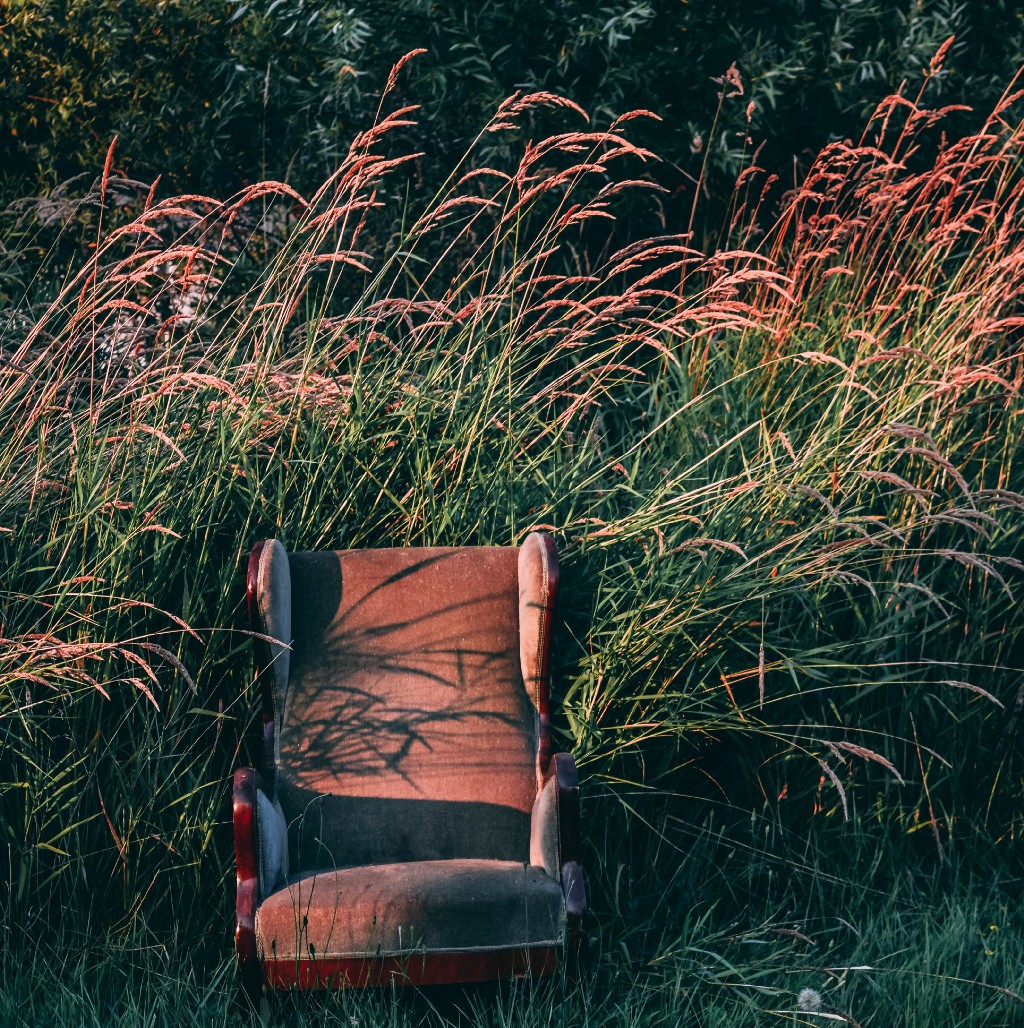Books & Culture
Stop Dismissing Midwestern Literature
It’s time to give up the mistaken idea that the heartland is a cultural wasteland

I’ve spent 18 years, on and off, living and writing outside the Midwest, but it’s still easy for the practiced ear to hear the nasal pitch in my voice and locate my hometown in Illinois between Chicago and I-80. I’m a professor in Connecticut, but the center of my cultural compass is a field or rusted warehouse in a state with a lot of vowels that many people can’t find on a map.
This is a challenging place to write from — but then again, it’s not really seen as a place at all. When I first began to send out my writing, I learned how Midwestern I was and heard that writing about the Midwest was “regional” in a bad way: not a good investment for a publishing house unless I could write about Chicago or plumb the gothic vein that confirmed readers’ stereotypes of hopelessly backward places and people or satirical wastelands of Suburbia.
I sent my first published essay as a writing sample for an academic job, and in my interview in a hotel room at MLA, a professor looked me up and down and said, “Wow. I expected someone more ‘Reba McEntire.’”
I first left the Midwest two days after my college graduation, eager to find the excitement and culture that was supposed to reveal my real life. The Midwest has typically been portrayed as a stultifying place that artists and Bohemians from Bob Dylan to the Walsh kids from 90210 flee on the way to finding themselves, in Greenwich Village or L.A. I drove out to Boston in a dented red pickup truck, not understanding that I was acting out a regional bias that has affected artistic culture for almost one hundred years.
Edward Watts, author of An American Colony: Regionalism and Roots of Midwestern Culture, describes the Midwest of the late 1700s, when it was “the Old Northwest,” the western edge of a new country settled with the violent extermination and relocation of Native Americans. Watts argues that the Old Northwest was the first colony of the United States, and that the current cultural relationship between Midwest and East Coast still ripples out from the dynamics established in that era.
Upon confessing homesickness I have heard, ‘I didn’t think there was anything there to miss.’ Yet Walt Whitman once described the Midwest as the nation’s ‘crown and teeming paradise.’
Watts, like me, moved from Illinois and lived in Connecticut, where his “ignorance of the East was a source of ridicule” but his “eastern friends’ provincial ignorance of the Midwest was, if anything, a badge of sophistication.” Watts writes that Midwesterners view the East “as the East views Europe, its own erstwhile colonial parent.”
Midwesterners aren’t an oppressed colonial minority. Watts explains that the Midwest fits in a postcolonial framework along with places like Australia where “white colonials stayed and made homes on land seized from a displaced or marginalized aboriginal population.” The Midwest illustrates the ongoing dynamics of imperialism, including the “sweeping amnesia” of colonialism that required strong identification with the centers of colonial cultural power. The Old Northwest — which Watts describes as “more diverse than the East in regard to race, class, and religion” — resisted that role but also internalized and reinterpreted its “own entanglement in empire.”
My own relationship with the small working and middle-class town of my birth is one of attachment threaded with sadness; it was a lovely yet harsh place to grow up. When I drive through hours of corn I am struck anew by the ecological costs of monocrop agriculture and the decimation of small-town life wreaked by the transition from family to factory farming. Racism forged white flight from the cities and the whiteness of sundown towns as the cities were renewed with waves of immigration. The economic upheavals of the Midwest are written in family stories: Then we moved north, the plant closed, we lost the farm. I love the place precisely because of the way all these forces weave together and find expression and evolution in Midwesterners’ lives. I don’t have a pamphlet or a sales pitch, and I’m still searching for the book that captures the essence I love. Maybe I could take you there to smell the rain, and we could set lawn chairs up in the garage to watch a storm roll in.
When I moved to the East Coast for the first time, I began to see the Midwest through the eyes of others. A new acquaintance would lean in at a party to ask where I was from, then express sympathy at my answer. “Wow. How in the world did you end up here?” he might say, as if I’d engineered a prison break. Upon confessing homesickness I have heard, “I didn’t think there was anything there to miss.” Yet Walt Whitman once described the Midwest as the nation’s “crown and teeming paradise.” So what happened?
In From Warm Center to Ragged Edge: The Erosion of Midwestern Literary and Historical Regionalism, 1920–1965, Jon Lauck argues that forces came together in the 1920s to turn the nation toward the coasts and to cement the image of the Midwest as the back alley of the nation. Literary editor Carl Van Doren played a large role. He penned an essay that appeared in the fall 1921 literary supplement of The Nation arguing that World War I had brought together and given voice to writers who needed to rebel against the “cult of the village” and who sought to reveal the “slack and shabby” underside of small-town Midwestern life. Van Doren pulled evidence from Edgar Lee Masters’ Spoon River Anthology, Sherwood Anderson’s Winesburg, Ohio, Sinclair Lewis’s Main Street, and F. Scott Fitzgerald’s This Side of Paradise. Masters, Lewis, and Anderson all disagreed with Van Doren, saying that he was simplifying works that were intended to portray a three-dimensional Midwest. But Van Doren’s thesis stuck, and also tanked the careers of Masters and Anderson, both of whom were dismissed after their later attempts to celebrate the Midwest were seen as sentimental schlock.
What is lost, among other things, is a potential narrative in which Midwestern writers helped to shape the canon and build literary realism.
Main Street by Sinclair Lewis in particular was read as a caricature of Midwestern small-town narrowness. And Lewis was rewarded handsomely for this portrait, essentially birthing the market for dissing the Midwest or focusing on its scariness. Lauck writes that attention to similar works — and lack of attention to those that celebrated the real Midwest — created a feedback loop that still affects our culture and literary canon. What is lost, among other things, is a potential narrative in which Midwestern writers helped to shape the canon and build literary realism.
Van Doren was influenced by critic Van Wyck Brooks and H. L. Mencken, who were among the early Modernists who fought for the role of the intellectual in modern culture and sought to wrest culture toward the coasts. In those same years, high culture began to be defined as whatever wasn’t Midwestern; The New Yorker was launched in 1925 with this tag line: “Not for the old lady from Dubuque.” The critic Stuart Pratt Sherman, Iowan by birth, opposed Van Doren’s dualism with a call for “middlebrow” culture: art and literature that would engage a broad audience. Yet the cultural production continued to shift toward the coasts.
Being away has sharpened my love and longing as I learn what I am missing elsewhere. We Midwesterners are often seen as friendly and a little naïve, our reticence or bashfulness inaccurately read as stupidity. If we make something of depth and substance, it is a bit of a surprise or maybe an accomplishment to have transcended the nothingness. If we leave the region of our birth, it’s assumed that we gratefully disappear into our destination.
Yet Midwesterners in all their urban, suburban, and rural varieties have a way of talking, walking, dreading, yearning, looking at the sky, cooking, planning their lives, and working, a way of being that is identifiable to other Midwesterners. My Midwestern antennae go up when I hear the flattened accent in all its guises, lengthened pauses, a certain shrug or prolonged but non-confrontational way of making eye contact.
It’s time for the Midwest to be defined culturally as a part of the country on par with other regions.
If a new acquaintance asks more than one question about me and seems genuinely interested in the answer, I will counter with “Where are you from?” We then locate where we have lived based on the number of hours it takes to drive to other locations or bodies of water, exchanging bemused smiles as if to say, And here we both are, out of our element. Nice work muddling through. We read each other’s speech, gestures, and facial expressions to see subregion and hear nearby cities. We smile, happy to have a little bit of home between us.
These days the so-called fly-over states with all the vowels are also dismissed as Trump territory. There’s plenty of racism in the Midwest…but also everywhere else. The Midwest these days seems almost to function as a geographical repository for images of deterioration, as an imaginary focal point where racism, addiction, white supremacy, and conformity are located.
It’s time for the Midwest to be defined culturally as a part of the country on par with other regions. Robert Dorman offers regionalism and the pride of regional cultural production as a “soft” form of identity for white people as a counterbalance to white identity and the virulence of racism. Lauck argues that our whole national culture has a responsibility to commit to a fairer view of a region “to protect it from degrading clichés and the realm of easy cynicism.”
Lauck mentions Belt Magazine and its press, Belt Publishing, as one promising press attempting to change this. (I’m in one of their newest anthologies called Rust Belt Chicago, with an essay about the ring of small towns around Chicago called Chicagoland). The press has published books about the cities in the region, each one with its own beautiful history of immigration, ethnicity, and race; architecture; art scene; agricultural and industrial past and present; and geography.
The supposed blankness of the Midwest hides its edginess. All the writers I love from the region are skirting those edges: Edna Ferber, Richard Wright, Meridel LeSueur, Thomas Dreiser. Sandra Cisneros writes in multiple genres about the Pilsen neighborhood in Chicago. There’s Bich Minh Nguyen’s story of refugee emigration from Vietnam to the suburbs of Detroit. Ira Sukrungruang’s Southside Buddhist. Lee Martin’s nonfiction is about his family’s unsuccessful migration from central Illinois to Chicago and then back again. There’s also Joe Oestreich’s writing about his life in the rock band Watershed as it skirted fame.
Other contemporary nonfiction writers from the Midwest who write about the region include Samantha Irby, Debra Marquart, Marvin V. Arnett, Cheri Register, Michael Martone, Angela Palm, Kate Hopper, Patricia Hampl, David Foster Wallace, Gayle Brandeis, Barrie Jean Borich, Paulette Bates Alden, Hanif Willis-Abduraqqib, Megan Stielstra, Ryan Van Meter, Kathleen Finneran, Karrie Higgins, Zoe Zolbrod, Rebecca McClanahan, Joe Mackall, Roxane Gay, and so many others I’ve missed.
The supposed blankness of the Midwest hides its edginess.
A tiny sampling of current Midwestern fiction I’ve loved includes Jane Smiley, Marilynne Robinson, Celeste Ng, Jane Hamilton, Angela Flournoy, Leon Forrest, and Nancy Zafris, along with many profiled in the book The New Midwest: A Guide to Contemporary Fiction of the Great Lakes, Great Plains, and Rust Belt, edited by Mark Athitakis, but this is not even a representative list. The wealth of literature — not to mention poetry and other genres best left to other writers to catalogue — quickly becomes overwhelming. What unites these writers is that they all create on the page a living place that is not so far away.
In four years, Van Doren’s thesis about the Midwest as cultural wasteland will celebrate its century of influencing American culture. And I hope that the era of the Midwest as a region too “regional” to read will slowly decline — but that requires, I think, Midwesterners like me to step out of our reticence and speak to the blankness, to say loudly what we loved and struggled with about the place that made us. When I left the Midwest for the second time, it was for a job, as happens to so many of us. My leaving was tinged with regret, and I miss my complicated homeland.
When I did a signing in a Barnes & Noble’s bookstore near my Illinois hometown, a woman stopped by and bought two copies — a complete stranger, without even glancing at the topic or the cover — because “you wrote a book and you’re from here. You made us proud.”








